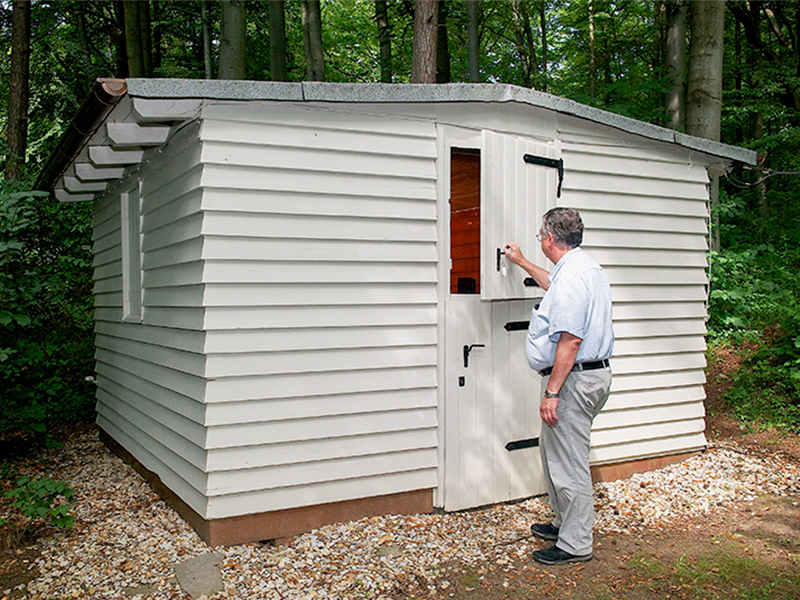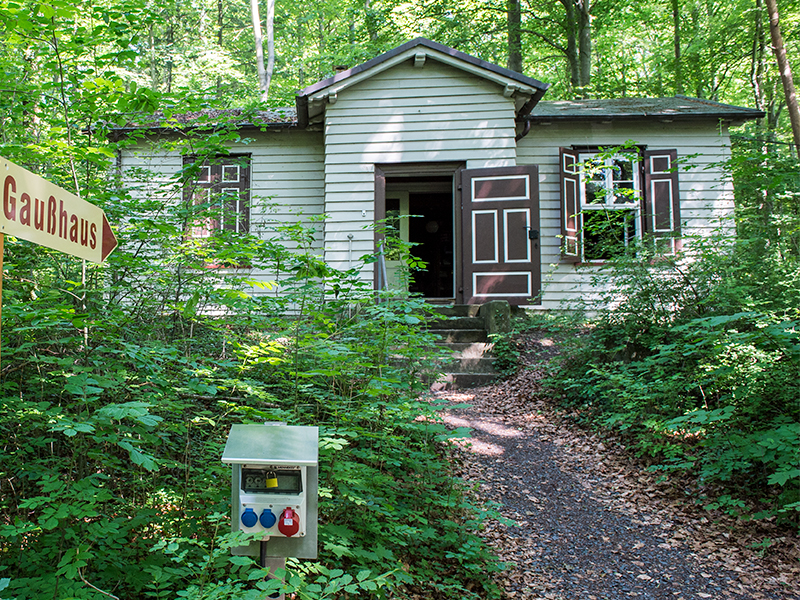
Discover here the world of Emil Wiechert and how earthquakes occur.
The Wiechert Earthquake Station Göttingen is a fully functional seismological measuring station and a walk-through museum of technology at the same time. Visitors have the opportunity to see historical and modern seismographs and witness how small artificial earthquakes are generated by dropping the Mintrop ball or how the passage instrument was once used for the astronomical determination of time.
Get to know the individual buildings on the site of the Earthquake Station. The association “Wiechert’sche Erdbebenwarte Göttingen e.V.” hopes that you will enjoy the informative tour.
In the Old Earthquake Vault, you can see more than one hundred-year-old high-tech equipment! Here you can experience a seismograph, the 17-tonne pendulum – the world’s probably heaviest seismograph, which is still fully functional. It has been reliably recording earth tremors for more than 100 years. The vibrations caused by the earthquakes are scratched into smoked paper. Learn here how smoked paper is produced. continue
In the New Seismograph Vault, you can see a modern seismometer. The vibrations caused by the earthquakes are displayed on two computer monitors. continue
Learn here how astronomical time is determined. The Astronomical Hut used to house the “passage instrument”. The scientists trained this instrument on the sky to observe the times of star transits. This allowed them to calculate astronomical time, which, in turn, allowed the earthquakes recorded at different locations around the world to be synchronised. Only the comparison of waves made it possible to properly evaluate earthquakes and to draw conclusions about the Earth’s interior. continue
Original or a replica? In any event, it was set up on Samoa as an outpost of the Earthquake Station Göttingen for German researchers. The measuring station was far enough away from Göttingen to record comparative values. The Samoa Observatory still exists today, and the Samoa Hut is a splendid reminder of that cooperation. continue
The Gaußhaus is a building that was built entirely out of wood and non-magnetic metals (where needed, copper, brass and zinc were used – but no iron). The house was iron-free for a reason: World-famous Göttingen-based physicist Carl Friedrich Gauss had this building put up in 1833 to carry out research into geomagnetism. Iron is magnetic (ferromagnetic) and would have falsified the research findings. Initially, the building stood next to the observatory in Geismar Landstraße and was relocated to the site of the Wiechert Earthquake Station Göttingen around 1902. continue
Between 1901 and 2005, this magnificent building was home to the Institute of Geophysics of the Georg August University of Göttingen. Emil Wiechert carried out research in the new fields of geophysics, seismology, geomagnetism and meteorology. Today, the building is used by “Jugendhilfe am Rohns”. continue
Ludger Mintrop – a student of Emil Wiechert’s – built this steel scaffolding and used it to drop a four-tonne steel ball from a height of 14 m. These experiments gave rise to the seismic exploration method. Later on, this method earned Ludger Mintrop a fortune, enabling him to locate mineral resources or crude oil deposits in the Southern States of the U.S. continue
Good to know!
Who was Emil Wiechert?
Emil Wiechert was one of the most important scientists exploring earthquakes. He carried out research and worked in Göttingen. read more
Can I generate an earthquake myself at the Wiechert Earthquake Station in Göttingen?
Yes, a tiny one! During the family event in summer, you can jump off a small platform and an amplifier makes the resulting vibrations audible. Try it!
The Mintrop ball weighs 4 tonnes or 4,000 kg. Can it be lifted by people?
Yes! At the Earthquake Station, almost one hundred students once pulled up the Mintrop ball using several ropes. The necessary force was distributed over many persons. This is how they made it happen!










